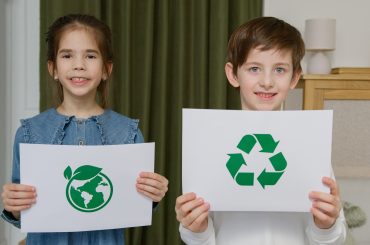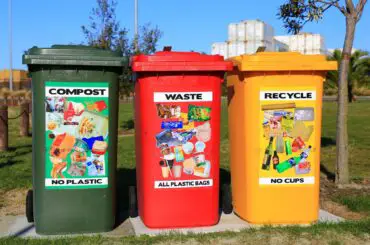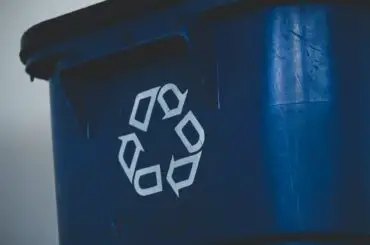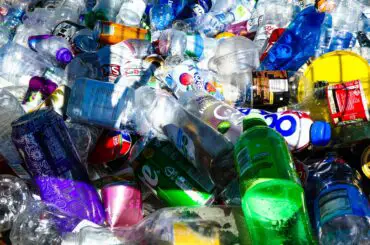Recycling and sustainability have become paramount concerns in our modern society. As we strive to protect the environment and conserve valuable resources, recycling plays a pivotal role. Among the various materials that can be recycled, glass stands out for its unique properties and potential for reuse. So, the question arises: “Can glass be recycled?” Let’s delve into the world of glass recycling and explore its significance in the broader context of recycling practices.
Glass recycling is a topic of great relevance and importance. Glass, with its remarkable durability and versatility, has been a part of human civilization for centuries. From glass bottles and jars to windows and decorative items, glass is ubiquitous in our daily lives. However, its disposal can have significant environmental implications. This brings us to the crucial question: Can glass be recycled? Understanding the answer to this question is essential for us to make informed choices and contribute to sustainable living.
In the following sections, we will unravel the mysteries of glass recycling. We will explore the composition of glass and its recyclability, examine the intricate process of glass recycling, and highlight the benefits it offers to both the environment and our communities. Additionally, we will address the challenges faced in glass recycling and discuss the innovative initiatives that hold promise for the future.
So, let’s embark on this journey of discovery and uncover the true potential of glass recycling. By understanding the answer to “Can glass be recycled?” and actively participating in glass recycling efforts, we can contribute to a more sustainable world and pave the way for a greener future.
Contents
 Glass Composition and Recyclability
Glass Composition and Recyclability
Glass is a fascinating material composed primarily of three main ingredients: silica (silicon dioxide), soda ash (sodium carbonate), and limestone (calcium carbonate). Silica, in the form of sand, is the primary component, constituting around 70-75% of the glass composition. Soda ash, comprising about 12-15% of the mix, acts as a flux, reducing the melting temperature of silica and aiding in the glass formation process. Limestone, making up approximately 10-15% of the composition, helps stabilize the mixture and improve the glass’s chemical durability.
One of the remarkable properties of glass is its recyclability. Glass can be recycled repeatedly without losing its quality, making it a truly sustainable material. Unlike certain materials that degrade during recycling, glass retains its integrity and strength throughout the recycling process. This inherent durability is what sets glass apart as an ideal candidate for recycling.
Recycling glass significantly reduces the need for extracting and processing raw materials, such as silica, soda ash, and limestone, thus conserving valuable natural resources. Additionally, the recycling process for glass consumes less energy compared to the production of new glass from raw materials. This energy-saving aspect of glass recycling contributes to the reduction of carbon emissions and environmental impact associated with glass manufacturing.
Furthermore, glass recycling plays a vital role in waste management. When glass is disposed of in landfills, it takes an extraordinarily long time to decompose naturally. By recycling glass, we divert it from landfills, minimizing the strain on limited landfill space and reducing the potential for environmental pollution.
The recyclability of glass extends beyond traditional glass bottles and jars. Other glass products, such as windows, mirrors, and glassware, can also be recycled. However, it’s essential to separate different types of glass during the recycling process. Certain glass items, such as ceramics, Pyrex, or window glass, have different chemical compositions and melting points, which can affect the quality and strength of recycled glass if mixed with standard glass containers. Therefore, it’s important to follow local recycling guidelines to ensure the proper sorting and separation of glass items.
Glass Recycling Process
The process of glass recycling involves several crucial steps, starting with the collection of used glass. There are various collection methods in place to facilitate glass recycling, including curbside recycling programs, drop-off recycling centers, and dedicated glass collection bins.
Curbside recycling programs are commonly implemented in many communities. Residents are provided with separate recycling bins or containers for glass, along with other recyclable materials. On designated collection days, recycling trucks pick up the bins placed at the curbside, ensuring the convenient and widespread collection of glass from households.
Drop-off recycling centers are another option for glass collection. These centers serve as designated locations where individuals can bring their recyclable materials, including glass. Typically, there are containers or bins specifically designated for glass, making it easy for people to drop off their used glass items.
Dedicated glass collection bins may be strategically placed in public spaces, such as parks or parking lots, to encourage glass recycling on the go. These bins are specifically designed to collect glass, making it convenient for individuals to dispose of their glass items properly.
Once the used glass is collected, it undergoes a sorting process. Glass is typically sorted based on its color, which is an important aspect of glass recycling. The most common glass colors are clear, green, and brown. Sorting glass by color is significant because different colored glass has different chemical compositions and melting points. To ensure the production of high-quality recycled glass, color separation is essential. This allows for the creation of homogeneous glass batches during the recycling process, resulting in glass products of consistent quality.
After sorting, the collected glass goes through a cleaning and preparation process. This involves removing any contaminants, such as paper, plastic, or metal, from the glass. The cleaning process can vary and may include washing, sieving, and magnet separation techniques to ensure that the glass is free from impurities. Proper cleaning and preparation are vital to maintain the quality of the recycled glass and ensure it meets the required standards for further processing.
Once the glass is cleaned and prepared, it is ready to be processed through the recycling plant, where it will be crushed into small pieces called cullet. This cullet is then mixed with additional raw materials, such as sand, limestone, and soda ash, to stabilize the mixture and facilitate the melting process. The molten glass is then refined, molded, and formed into new glass products, ready to be distributed for reuse.
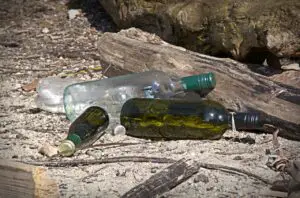 Benefits of Glass Recycling
Benefits of Glass Recycling
Glass recycling offers numerous environmental benefits that contribute to a more sustainable future. Here are some key advantages of glass recycling:
- Conservation of Natural Resources: Recycling glass helps conserve valuable natural resources. By using recycled glass (cullet) in the manufacturing process, the demand for raw materials like silica, soda ash, and limestone is reduced. This conserves natural resources, preserves ecosystems, and minimizes the need for extraction, which can have detrimental environmental impacts.
- Energy Savings and Reduced Carbon Emissions: Glass recycling is an energy-efficient process compared to producing new glass from raw materials. Melting recycled glass requires less energy because the cullet has a lower melting point than the raw materials. This translates into significant energy savings and a reduction in carbon emissions associated with glass manufacturing. By recycling one ton of glass, energy consumption can be reduced by up to 30%.
- Landfill Waste Reduction: Glass is inert and does not decompose over time. When glass ends up in landfills, it occupies valuable space for centuries. Recycling glass helps divert it from landfills, reducing the amount of waste sent for disposal. This not only extends the lifespan of landfills but also minimizes the potential for environmental pollution and contamination.
- Overall Environmental Footprint: Glass recycling plays a vital role in reducing the overall environmental footprint of the glass industry. By conserving resources, minimizing energy consumption, and reducing landfill waste, glass recycling contributes to a more sustainable and circular economy. It promotes the concept of “reduce, reuse, recycle” and fosters a responsible approach to resource management.
- Economic and Job Creation Benefits: Glass recycling also offers economic benefits. It creates job opportunities in the recycling industry, from collection and sorting to processing and manufacturing. Additionally, recycling glass reduces the cost of production for glass manufacturers, making recycled glass a cost-effective alternative to virgin materials.
Challenges and Promising Initiatives
Glass recycling, like any recycling process, faces its share of challenges. Here are some common challenges in glass recycling and promising initiatives aimed at overcoming them:
- Differentiating Recyclable and Non-Recyclable Glass: One challenge lies in differentiating recyclable glass from non-recyclable types. Certain glass items, such as ceramics, Pyrex, or window glass, have different chemical compositions and melting points compared to standard glass containers. Mixing these non-recyclable glass types with recyclable glass can negatively impact the quality and strength of the recycled glass. To address this, education and awareness campaigns are essential to inform the public about what types of glass are recyclable and what should be disposed of separately.
- Contamination Issues: Contamination is another significant challenge in glass recycling. Contaminants like paper, plastic, or metal can be inadvertently mixed with glass during the collection process. Contamination affects the efficiency of the recycling process and can lead to lower-quality recycled glass. To tackle this issue, recycling facilities employ advanced sorting technologies, such as optical sorters and eddy current separators, to remove contaminants effectively. Public education and improved recycling infrastructure also play a crucial role in minimizing contamination.
- Innovative Separation and Cleaning Technologies: Promising initiatives are emerging to enhance glass recycling practices. One such innovation is advanced glass separation technologies. These technologies utilize sophisticated sensors and sorting systems that can identify and separate glass by color, size, and composition, improving the efficiency and effectiveness of the recycling process. Additionally, advancements in cleaning technologies, such as high-pressure washing and air separation techniques, help remove contaminants more thoroughly, resulting in cleaner, recycled glass.
- Closed-Loop Recycling Systems: Closed-loop recycling systems are gaining traction in the glass recycling industry. In a closed-loop system, glass manufacturers collaborate with recycling facilities to source their raw materials exclusively from recycled glass. This approach eliminates the need for additional extraction of raw materials and creates a self-sustaining recycling loop. Closed-loop systems reduce the environmental impact associated with glass production, promote circular economy principles, and encourage collaboration between different sectors of the industry.
- Public Engagement and Education: Increasing public engagement and education are vital in improving glass recycling practices. Encouraging individuals to properly sort glass, follow local recycling guidelines, and remove contaminants before recycling can significantly enhance the quality of recycled glass. Education campaigns can also raise awareness about the environmental benefits of glass recycling and promote a culture of responsible consumption and waste management.
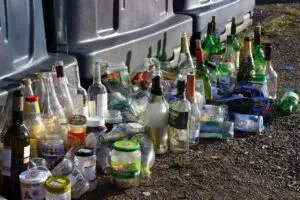 So, Can glass be recycled?
So, Can glass be recycled?
In conclusion, glass recycling plays a vital role in our quest for sustainability. Its recyclability and durability make it a valuable resource to conserve. By participating in glass recycling, we can reduce the need for raw materials, save energy, lower carbon emissions, and minimize landfill waste. With innovative technologies and public engagement, we can overcome challenges and promote responsible recycling practices. Let us actively contribute to a greener future by embracing the potential of glass recycling and creating a more sustainable world.
Want to know what the recycle symbol means? Read it here.


